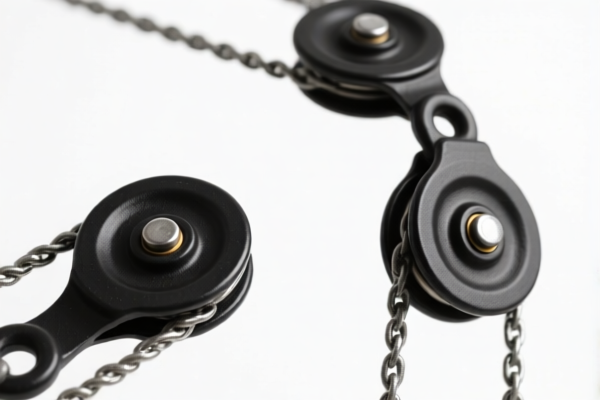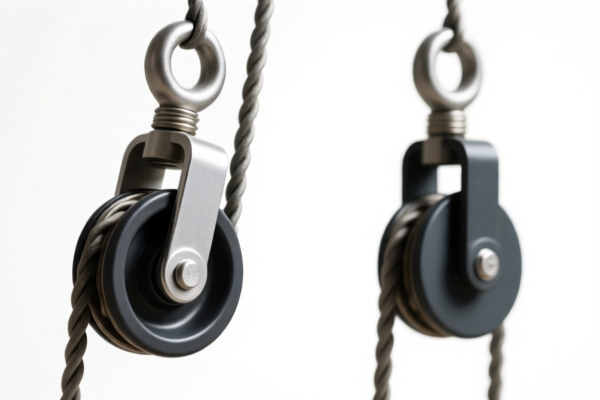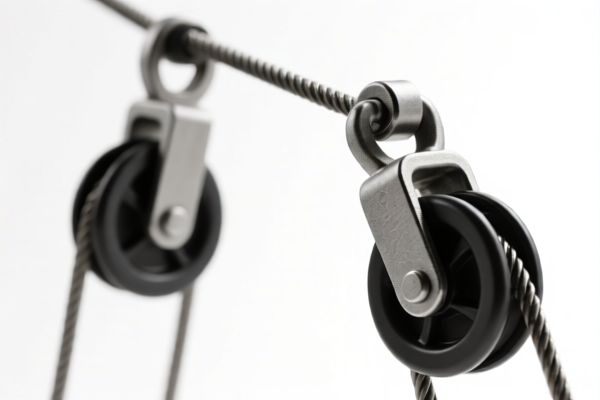| HS Code | Official Doc | Tariff Rate | Origin | Destination | Effective Date |
|---|---|---|---|---|---|
| 84835000 | Doc | Error | CN | US | 2025-05-12 |
| 8483509080 | Doc | 57.8% | CN | US | 2025-05-12 |
| 3926905600 | Doc | 60.1% | CN | US | 2025-05-12 |
| 3926909989 | Doc | 42.8% | CN | US | 2025-05-12 |
| 3914006000 | Doc | 58.9% | CN | US | 2025-05-12 |




Okay, let's break down the HS codes you've provided for "PULLEY BLOCK" and related items. I'll give you a structured explanation, focusing on clarity and potential implications for your import/export process.
Understanding HS Codes: A Quick Primer
HS codes (Harmonized System codes) are internationally standardized codes used to classify traded products. They're crucial for determining tariffs, taxes, and import/export regulations. The first 6 digits are generally consistent worldwide, while additional digits are specific to each country.
Analysis of Your Provided HS Codes
Here's a breakdown of each code, with explanations and recommendations:
1. 8483.50.00 – Flywheels and pulleys, including pulley blocks
- 84: Machinery and mechanical appliances; parts thereof. This chapter covers a broad range of mechanical equipment.
- 83: Transmission machinery, gearing, bearing housings and plain shaft bearings; gears and gearing; ball or roller screws; gear boxes and other speed changers, including torque converters.
- 50: Flywheels and pulleys, including pulley blocks. This is where your "PULLEY BLOCK" primarily falls.
- 00: This indicates the general classification within the category.
- Tax: Failed to retrieve tax information. This is concerning. You must confirm the tax rate with your customs broker or the relevant customs authority in your destination country.
2. 8483.50.90.80 – Flywheels and pulleys, including pulley blocks: Other: Other Other
- 84 & 83 & 50: Same as above – transmission machinery, specifically flywheels and pulleys/pulley blocks.
- 90: Other. This suggests a more specific sub-classification within the "other" category.
- 80: Further specification – likely a very detailed categorization.
- Tax:
- 基础关税 (Basic Tariff): 2.8%
- 加征关税 (Additional Tariff): 25.0%
- 2025.4.2后加征关税 (Additional Tariff after April 2, 2025): 30%
- Total Tax: 57.8%
- Recommendation: Be aware of the tariff increase scheduled for April 2, 2025. Plan your imports accordingly.
3. 7326.90.88 – Other articles of iron or steel: Other: Other: Other: Other Other
- 73: Articles of iron or steel.
- 26: Other articles of iron or steel.
- 90: Other. This is a very broad category, suggesting the item isn't specifically defined elsewhere.
- 88: Further specification.
- Tax: Failed to retrieve tax information. Critical to investigate. This code is quite general, and the tax rate could vary significantly.
4. 3926.90.56.00 – Other articles of plastics and articles of other materials of headings 3901 to 3914: Other: Belting and belts, for machinery: Containing textile fibers: Other: With textile components in which vegetable fibers predominate by weight over any other textile fiber
- 39: Plastics and articles thereof.
- 26: Other articles of plastics.
- 90: Other.
- 56: Belting and belts, for machinery.
- 00: Further specification.
- Tax:
- 基础关税: 5.1%
- 加征关税: 25.0%
- 2025.4.2后加征关税: 30%
- Total Tax: 60.1%
- Recommendation: This code applies if your pulley block includes significant textile components, particularly vegetable fibers.
5. 3926.90.99.89 – Other articles of plastics and articles of other materials of headings 3901 to 3914: Other: Other Other
- 39 & 26 & 90: Same as above – plastics articles.
- 99: Other.
- 89: Further specification.
- Tax:
- 基础关税: 5.3%
- 加征关税: 7.5%
- 2025.4.2后加征关税: 30%
- Total Tax: 42.8%
6. 3914.00.60.00 – Ion-exchangers based on polymers of headings 3901 to 3913, in primary forms: Other
- 39: Plastics and articles thereof.
- 14: Ion-exchangers.
- 00: Further specification.
- 60: Other.
- Tax:
- 基础关税: 3.9%
- 加征关税: 25.0%
- 2025.4.2后加征关税: 30%
- Total Tax: 58.9%
Important Recommendations & Next Steps:
- Material Composition: Crucially, determine the exact material composition of your pulley blocks. Are they primarily metal (iron/steel), plastic, or a combination? This will dictate the correct HS code.
- Textile Content: If there are textile components, determine the weight percentage of each fiber type (vegetable, synthetic, etc.).
- Functionality: What is the specific function of the pulley block? Is it part of a larger machine, or is it sold as a standalone component?
- Confirm Tax Rates: For codes with "Failed to retrieve tax information," immediately contact your customs broker or the relevant customs authority in your destination country. Do not rely on estimates.
- Consider the April 2, 2025 Tariff Changes: If possible, adjust your import schedule to avoid the higher tariffs.
- Request a Binding Ruling: For complex cases, consider requesting a binding ruling from your customs authority. This provides legal certainty regarding the correct HS code and tariff treatment.
- Certifications: Depending on the destination country, you may need specific certifications (e.g., safety standards, material composition). Check the import requirements for your target market.
Disclaimer: I am an AI and cannot provide definitive customs advice. This information is for general guidance only. Always consult with a qualified customs broker or the relevant customs authority for accurate and up-to-date information.
Customer Reviews
I really appreciated the section on material composition and how it affects the HS code. It helped me understand why some codes have different tariff rates.
The page provided a lot of details, but some HS codes like 84835000 had missing tariff info. It would be better if all the necessary data was available.
The information on the different HS codes for pulley blocks was useful, especially the note about the 2025 tariff changes. I need to adjust my shipping plan based on this.
The breakdown of HS Code 8483509080 and its tariff rate of 57.8% was super helpful. I was able to understand the implications for my pulley block exports to the US.